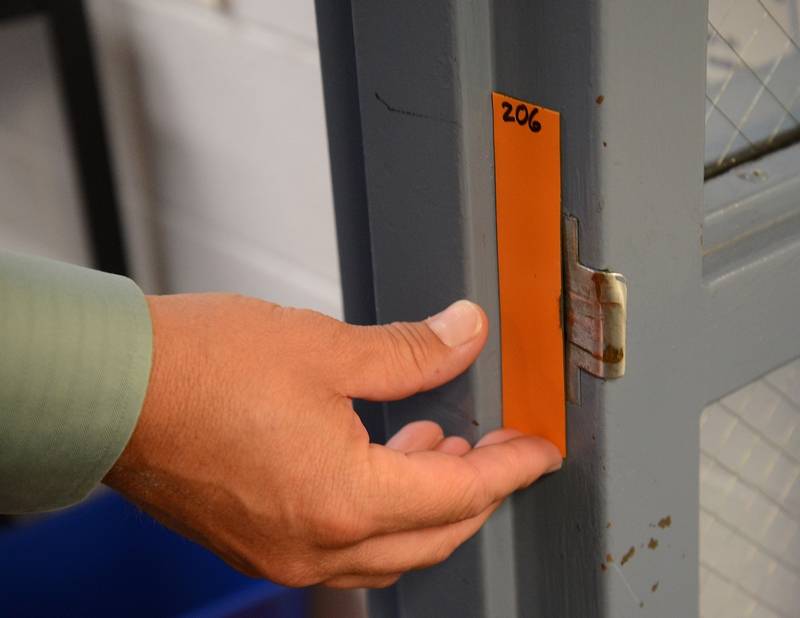 Humans are inventive. When we’re faced with a problem – we look for a solution. But sometimes that path leads to a “solution” that creates other problems. We have seen that process repeated many times with regard to classroom security.
Humans are inventive. When we’re faced with a problem – we look for a solution. But sometimes that path leads to a “solution” that creates other problems. We have seen that process repeated many times with regard to classroom security.
Last week, I read an article about a school shooting that occurred in May at the STEM School Highlands Ranch, near Denver. One student was killed, and 8 were injured – 2 students at the school have been charged with the crime. As I’ve said before, it’s important to research past school shootings and understand what could have been done differently regarding physical security. When I read the arrest affidavit, I noted that during the shooting one of the assailants “pulled the magnetic strip on the door and pulled it shut so it couldn’t be opened from the outside.”
This magnetic strip is the type that goes over the strike in the frame, to prevent a lock on a classroom door from latching. I haven’t written much about this practice, because if a classroom door is not fire-rated, the magnetic strip is not a code violation. But how did we get to this point, where magnetic strips are part of the security plan for some schools?
- Years ago, many classroom doors had entrance/office function locks. These locks are locked from inside the classroom by pushing a button or turning a thumbturn on the lock.
- Because of students locking the teacher out of the classroom (or worse), traditional classroom locks became the norm. This function can only be locked by inserting a key into the cylinder on the hallway side of the door.
- When school shootings and other incidents of this type became more common, it was clear that opening the door to insert the key in the outside cylinder could expose the teacher to danger, so the classroom security function was created. This lock has an additional key cylinder on the inside, so the teacher can use a key to lock the outside lever without opening the door.
- Due to concerns about the ability to locate a key and use fine motor skills to insert it into the cylinder during an active-shooter event, school administrators looked for solutions to the problem of how to lock the door quickly. One method of quickly securing the classroom is to keep the door locked at all times, regardless of the lock function.
- The problem with having classroom doors that are always locked, is that it’s inconvenient when students arrive late or leave during class and return. To allow access while the door is locked, some schools use a magnetic strip to cover the hole in the strike. This prevents the latch from engaging, so the door can be pushed or pulled open even though the lock is locked.
- Even on non-fire-rated doors, the magnetic strip creates some problems:
- The door has to be opened – at least a little – to pull off the magnetic strip and lock the door.
- Teachers may not consistently carry keys to allow immediate access, because the door is never actually locked under normal circumstances.
- As in the Highlands Ranch shooting, an unauthorized person can lock the door, delaying staff response – especially if teachers are not in the habit of carrying keys.
I don’t think there is a one-size-fits-all answer for classroom security, but as we consider each new problem, it’s important to remember the progression of the security methods used over past decades. The original problem of tampering with the lock – whether for mischief or something more serious – has not gone away.
Photo: Daily Herald
You need to login or register to bookmark/favorite this content.





Think how much worse it could have been if there had been an illegal barricade device with no way to release it from the outside. These shooters and the one at UNCC in April were both in the classroom when they started shooting. What if they all would have had access to barricade devices. No one has mentioned this yet.
There was an Allegion webcast several months ago, I forget who the person was saying it but I recall hearing something like:
“Locksets are manufactured to function correctly with their latch bolts extended outward 99% of their life, only being retracted when the lever is turned to open the door. The magnet forces the latch bolt into a condition contrary to it’s design by keeping the latch retracted 99% of the time. When the magnet is removed to release the latch, what are the guarantees that the internal components of the lock will function correctly and secure the door? An emergency situation isn’t the time to find that out that a lock isn’t functioning correctly.”
I’ve also seen magnets used when placed between the door and the rabbet to keep the door slightly open, preventing it from latching.
As a design and construction professional within a County School System, I hate seeing the use of these magnets. It defeats every security measure we try to put in place.
I often say security and convenience are on opposite ends of the spectrum. Seems like everyone wants more “security” until they get it.
My problem with this “other method” is none of the doors latch. Even if we ignore the fire door part it reminds me of the “Close Before You Doze” idea. A fire could start in a non occupied room and were the spread would be limited even with a non fire door an unlatched door would provide no protection.
I like your chronology of the function changes on Classroom doors over the years.
I also like the bullet point summary of the the problems encountered and the most common work-arounds that have sprung up. It all seems accurate to me. Including that there isn’t a one-size-fits-all answer.
When trying to come up with the best working solution for an opening, I try to consider the following conditions:
Normal operation/Extraordinary operation (Fire, Active Shooter, Bully), Ingress/Egress, Authorized User/Unauthorized User (Good Guy/Bad Guy), Power Available/Power Interrupted, Fire-Rated/Non-Rated. That’s 32 possibilities right there (2 to the 5th). Throw in Good/Better/Best and Meets Code/Violates Code and there’s a lot to consider. Then the human factor that people not involved in door hardware every day might not understand their existing functionality or remember their training.
Almost every day I marvel at how well things work routinely (traffic lights, cell phones, plumbing, courts, my computer). Still, this does not happen on its own. It’s due to the integrity, knowledge, and hard work of millions of unseen and un-thanked workers. Wanting to do my part helps keep me motivated.
A reusable watergate as a permanent solution instead of a pentesting tool. I love it. And hate it.